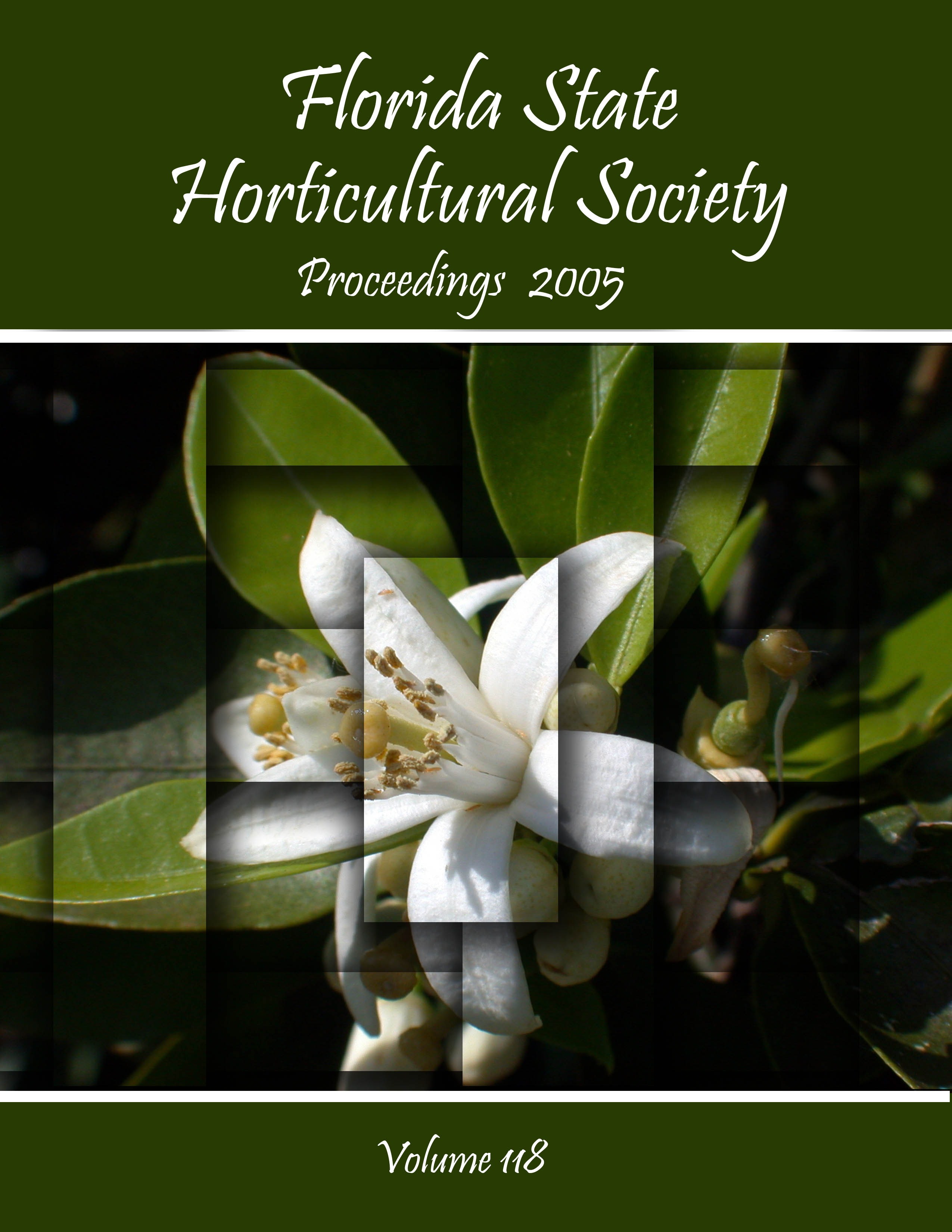Abstract
Gibberellic Acid (GA) has been reported to delay peel senescence of citrus fruits. Since physiological and pathological disorders of citrus tend to occur more frequently on senescent tissues, GA treatments are used in some citrusgrowing areas to maintain quality through market channels. Studies were conducted during the 2002-03 season to investigate the effects of pre- or postharvest GA treatments on postharvest fresh fruit quality and quality retention during storage of 'Fallglo' tangerines and 'Ruby' Red grapefruit. Preharvest sprays of GA at 30 g active ingredient (a.i.) per acre with 0.05% Silwet increased peel puncture resistance, but also led to a slight reduction in total soluble solids (TSS). Preharvest GA treatments had no significant effect on juice content, titratable acidity (TA), or TSS:TA ratio. As expected, preharvest GA treatments delayed color development of 'Fallglo' tangerines at harvest and after exposure to ethylene compared to the 0.05% Silwet-treated control. Extending ethylene exposure from 6 to 18 hours allowed GA-treated fruit to color better than control fruit degreened for only 6 hours, but not better than control fruit degreened for 18 hours. Twenty one days after harvest, preharvest GA treatments had no effect on stem-end rot (SER) development, but tended to decrease total decay and decay due to anthracnose. Extending ethylene exposure to overcome GA-delayed color development enhanced the development of anthracnose and total decay. Inhibition of color development in harvested 'Fallglo' tangerines dipped in 250 ppm GA + 0.05% Silwet was not significant immediately after degreening compared to the control (0.05% Silwet only), but was significant 18 days after degreening. Postharvest GA dips, either before or after degreening, had no significant effect on postharvest SER, anthracnose, or total decay of 'Fallglo' tangerines 21 days after harvest. Postharvest weight loss was not affected by the GA treatments. GA treatments on 'Ruby' Red grapefruit resulted in phytotoxic injury when applied preharvest, but postharvest applications caused damage only when fruit were dipped in the GA solutions before degreening. At the concentrations used, pre- or postharvest GA treatments do not improve postharvest quality retention of Florida-grown 'Fallglo' or 'Ruby' Red Grapefruit during simulated commercial handling and storage.

